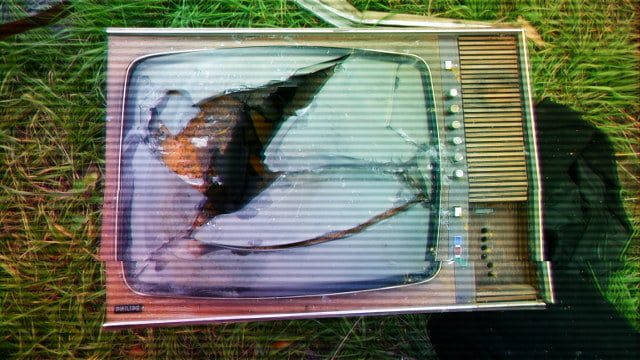
You see it sometimes, in books, movies, and television shows: Storylines, or even subtle images, that in retrospect seem to hint at events that actually end up happening in the real world. In paranormal circles, this phenomenon is known as predictive programming.
Examples of Media Predicting the Future
Some of the most well-known examples of popular media predicting the future come from The Simpsons. You heard right. In fact, if you check out Disney+ right now, they have a whole section dedicated to clips of The Simpsons foreseeing future events before they happen. Of course, you could say, with the sheer number of episodes in a series that’s existed for over 30 years, they were bound to get some things right. But some things are fairly on-the-nose.
The most haunting one, of course, involves Lisa Simpson holding up a brochure which reads “New York $9” in the episode The City of New York Vs. Homer Simpson. The two World Trade Center towers in the background of the brochure eerily make it look like it reads 911. The episode aired on September 21, 1997.
Another, and very striking, case of media predicting the future involves a novella called Futility. Published in 1898, this novella tells the story of an ocean liner called Titan, which hits an iceberg in the North Atlantic and sinks to its doom. On April 15, 1912, 14 years later, the RMS Titanic would suffer an uncannily similar fate.
What’s more, many of the descriptions of the ship in Futility resemble the Titanic: they were both described as “unsinkable,” they both carried fewer lifeboats than they should have, and they both were of a similar size.
On the lighter side of things, science fiction is often thought to be predictive. The many works of Jules Verne, Stanley Kubrick’s 2001: A Space Odyssey, and Gene Roddenberry’s Star Trek are simple examples of works that predicted technologies and scientific advances we now take for granted.
Global Premonitions
How do we explain these eerily accurate predictions of the future? While there are many possibilities, there’s one in particular that I find more fascinating than most.
Recently, I’ve been seeing references to one of Arthur C. Clarke’s science fiction novels called Childhood’s End. I won’t summarize it here (check elsewhere), but one of the story’s elements involves what the protagonist believes is a “racial memory.” You see, the story’s alien Overlords resemble what we’d call demons or the Devil. This makes the protagonist wonder if they hadn’t visited Earth once before in the very ancient past.
Perhaps, he thought, a previous “traumatic encounter” with them gave humans an “instinct to fear” their appearance, and was the genesis for our stories of demonic creatures like the Devil.
As it turns out, this was not the case. Instead, the Overlords explain that this innate fear was actually a premonition. This premonition manifested itself in our fear of demons, through our stories and mythologies.
Is it possible that these apparent “predictions” are actually brief moments of prescience or premonitions that slip into our books, movies, and television shows? Our stories? Unintended psychic forecasts?
Final Thoughts
Occam’s Razor would tell us it’s something far less complicated.
Humans, after all, have an astounding ability to see patterns everywhere, even where there are none. This is known as apophenia – of which pareidolia, a phenomena we often hear about when we see “faces” on Mars, is categorized. It could just be coincidence.
On the other hand, there is also the possibility that these predictions may literally be pattern recognition. Something along the lines of multiple discovery in science — when two or more scientists, on opposite sides of the globe, independently make a discovery at the same time. The conditions were set for that discovery to be made, and so someone — multiple people — did.
In the same way, perhaps, on occasion, the world stage simply meets conditions for certain events to occur, and people subconsciously notice.
Whatever the case, it’s a strange world out there.






